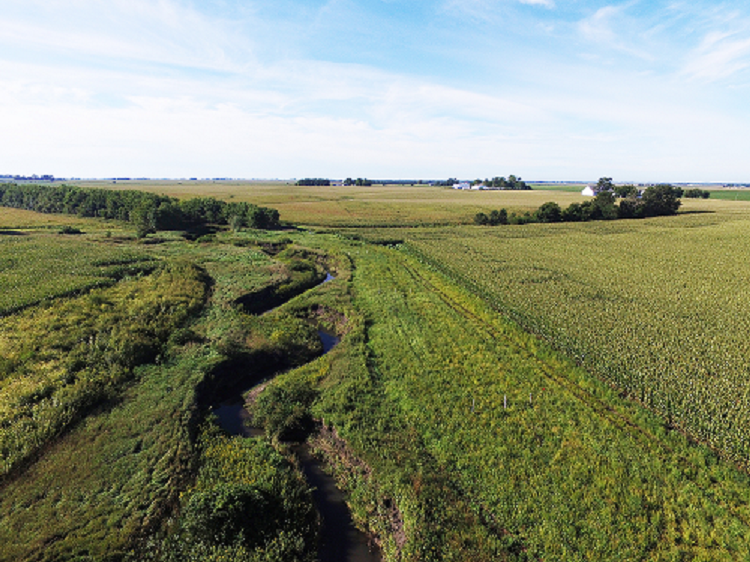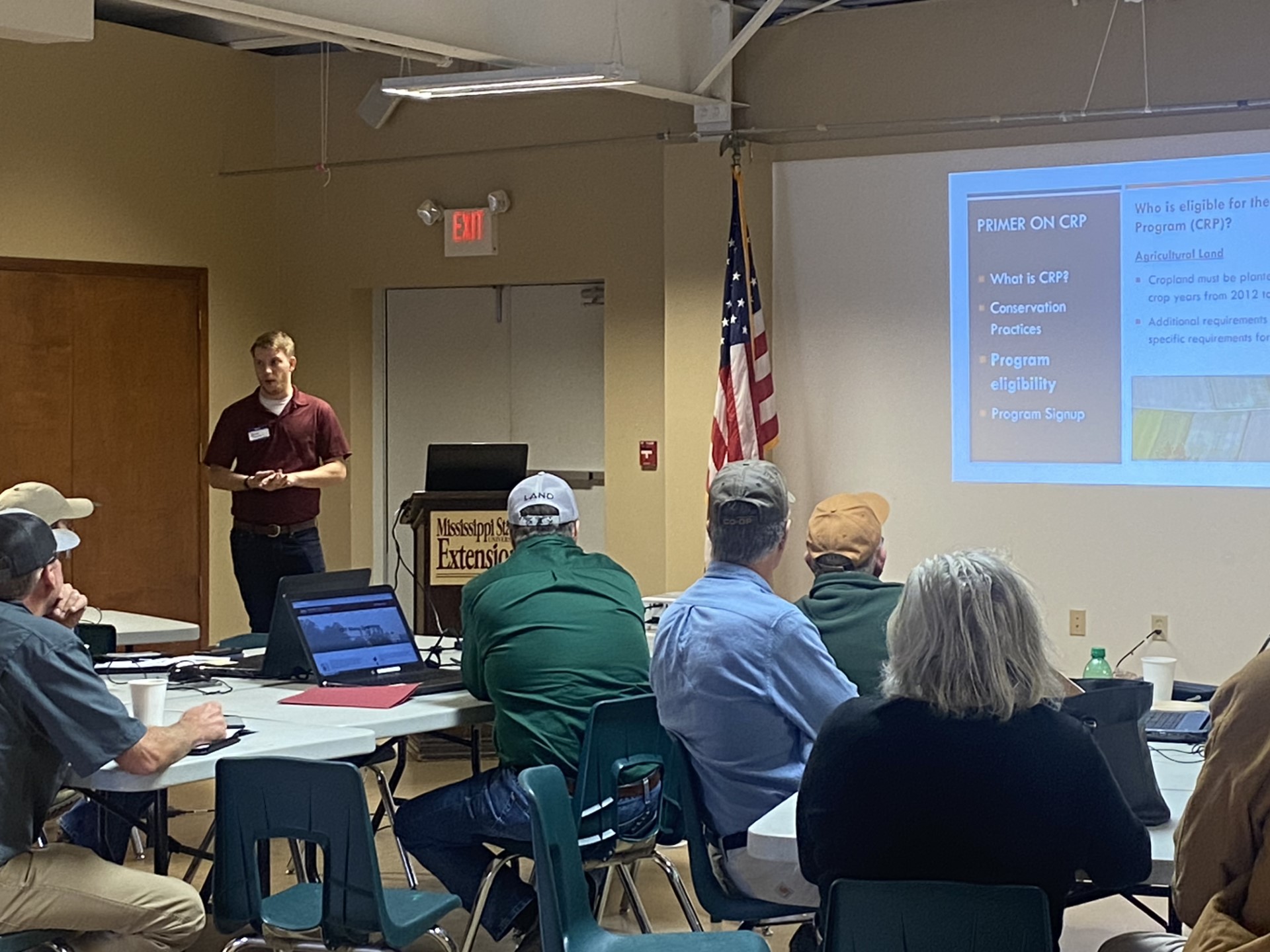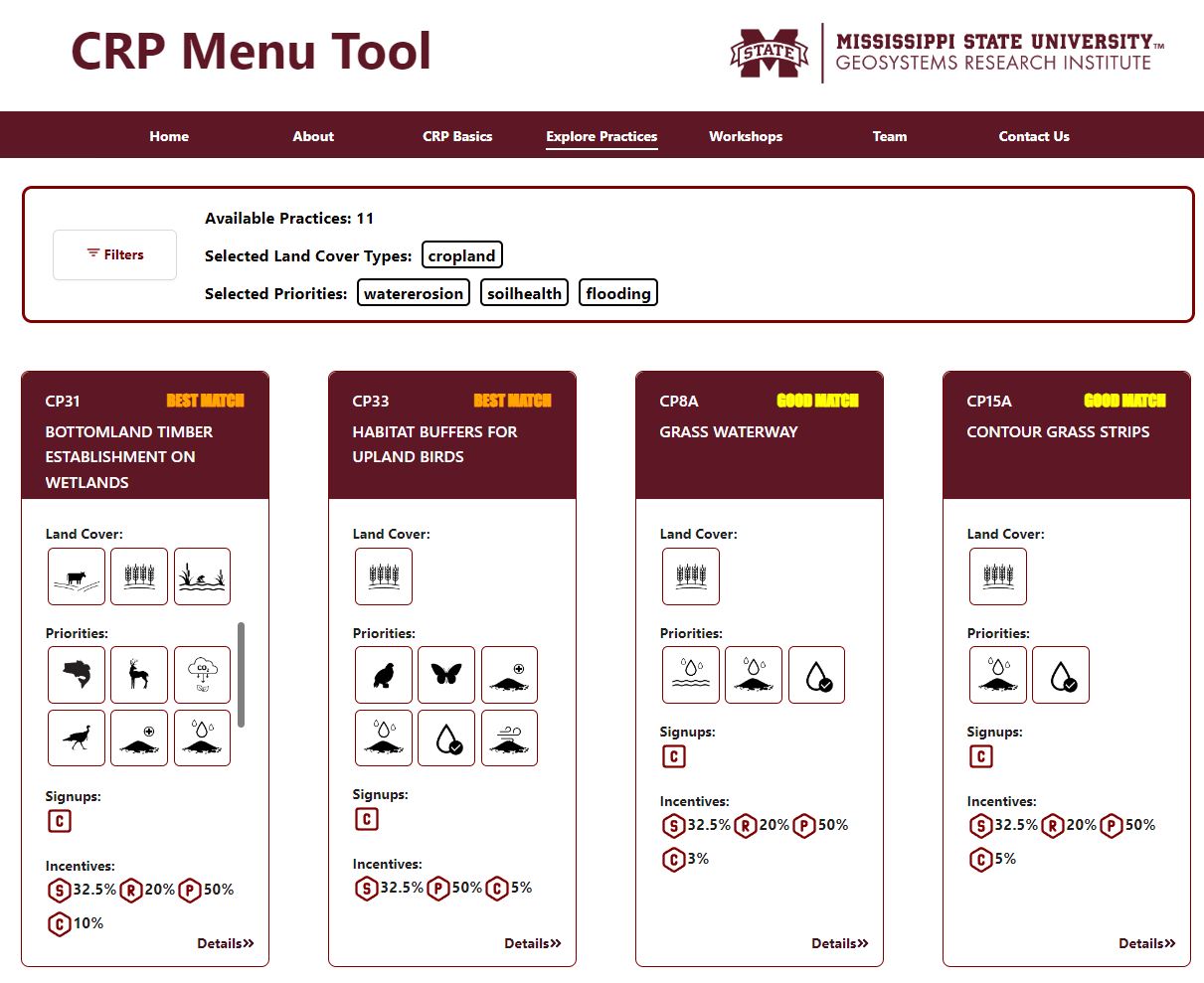CRP Menu: A Spatially Explicit Decision Support Tool to Enhance Landowner Engagement in CRP Incentives Programs
 In partnership with the U.S. Department of Agriculture, Mississippi State
University's Geosystems Research Institute and Forest & Wildlife Research
Center are building a web-enabled "CRP Menu" to provide landowners the
opportunity to explore practices under the Conservation Reserve Program (CRP)
supported by the U.S. Farm Bill. The goal is to increase landowner
understanding and engagement by improving access to information on conservation
practice availability and incentives based on location, interests, and goals.
Additionally, the tool will allow landowners the ability to explore potential
enrollment scenarios alongside USDA staff and technical service providers.
In partnership with the U.S. Department of Agriculture, Mississippi State
University's Geosystems Research Institute and Forest & Wildlife Research
Center are building a web-enabled "CRP Menu" to provide landowners the
opportunity to explore practices under the Conservation Reserve Program (CRP)
supported by the U.S. Farm Bill. The goal is to increase landowner
understanding and engagement by improving access to information on conservation
practice availability and incentives based on location, interests, and goals.
Additionally, the tool will allow landowners the ability to explore potential
enrollment scenarios alongside USDA staff and technical service providers.
THE CRP MENU TOOL PROVIDES A COMPREHENSIVE SET OF FEATURES TO SUPPORT LANDOWNERS IN NAVIGATING CONSERVATION PRACTICES EFFECTIVELY.
 The tool will give landowners access detailed descriptions of available
conservation practices tailored to their specific state and county to help
facilitate informed decision-making. The tool establishes connections between
landowner priorities and potential conservation practices, ensuring alignment
with individual objectives. By offering estimates of rental rates derived from
county averages and soil types, the tool assists in financial planning and
moreover, outlines general eligibility scenarios based on location and
objectives, simplifying the process for users. Additionally, the tool allows
for the generation of user-specific reports, tailored to their interests and
objectives, providing personalized guidance throughout the conservation
planning process.
The tool will give landowners access detailed descriptions of available
conservation practices tailored to their specific state and county to help
facilitate informed decision-making. The tool establishes connections between
landowner priorities and potential conservation practices, ensuring alignment
with individual objectives. By offering estimates of rental rates derived from
county averages and soil types, the tool assists in financial planning and
moreover, outlines general eligibility scenarios based on location and
objectives, simplifying the process for users. Additionally, the tool allows
for the generation of user-specific reports, tailored to their interests and
objectives, providing personalized guidance throughout the conservation
planning process.Development of the CRP Menu tool will occur in stages, with a pilot effort currently underway in Illinois, Mississippi, and Missouri. Through this phased approach, the research team aims to refine and optimize the tool's functionality, ensuring its effectiveness in providing comprehensive support to landowners in the pilot regions. As the project progresses, researchers anticipate expanding the tool's coverage to additional states and incorporating a broader range of CRP practices to better serve landowners nationwide.
For more information regarding this project visit: CRP Menu Tool

